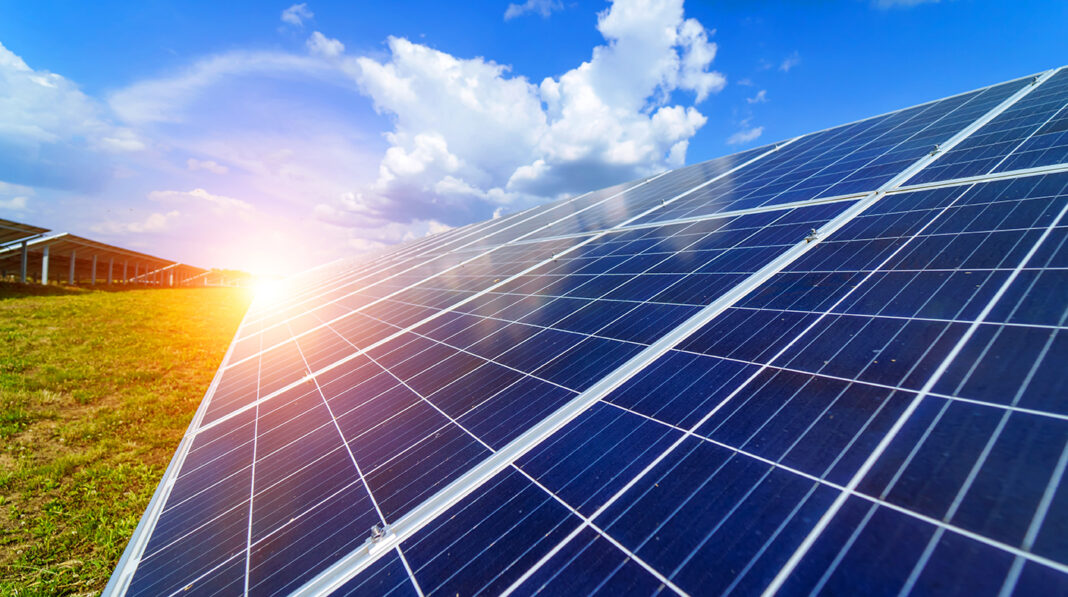Earth Day 2025 is a pivotal moment to reflect on and celebrate the remarkable strides in renewable energy. Across the globe, innovative technologies are actively reshaping our energy landscapes. The past year, from advancements in solar technology to cutting-edge energy storage solutions, has witnessed developments that underscore a significant shift towards cleaner, more efficient energy sources.
The urgency of climate action is increasingly apparent, making the transition to renewable energy more critical than ever. As nations and communities worldwide grapple with the effects of climate change, the inevitable focus on sustainable solutions has intensified.
According to a recent report published by the International Renewable Energy Agency or IRENA, today’s renewable energy sources accounted for 86 percent of new power capacity added globally in 2023, with a total increase of 473 GW.
This Earth Day, we celebrate the environmental benefits of renewable energy and the technological ingenuity driving this global transformation.
Perovskite Solar Cells: A New Dawn for Solar Efficiency
Solar energy continues to be at the cutting-edge and forefront of the renewable revolution, and perovskite solar cells represent a fascinating advancement. Traditional silicon-based solar cells have long been popular and the industry standard, but perovskites offer a compelling alternative with the potential for higher efficiency and cheaper production costs.
Recently, perovskite-silicon tandem solar cells have achieved efficiencies up to 28.6 percent in large-area cells. For instance, Hanwha Qcells set a world record of 28.6 percent efficiency for a large-area perovskite-silicon tandem cell. The ISE—also known as the Fraunhofer Institute for Solar Energy Systems—independently certified this milestone.
One key advantage of these novel perovskite solar cells is their cost-effectiveness. These materials are cheaper to produce than silicon and can be manufactured using low-temperature processes, reducing manufacturing expenses and lowering the energy footprint of production.
Additionally, perovskites’ versatility allows them to be used in flexible and transparent solar panels, opening up new possibilities for integration into various surfaces and devices. This innovation promises to democratize solar energy, making it more accessible and adaptable for diverse applications soon.
Floating Wind Farms: Unlocking Offshore Potential
Wind energy is another vital cornerstone of the renewable energy transition, and floating wind farms are expanding their reach into previously inaccessible offshore areas. Traditional offshore wind farms are typically fixed to the seabed, limiting their deployment to relatively shallow waters.
Floating wind farms, however, are anchored to the seabed but float on the surface, enabling them to be placed in much deeper waters further from the coastline. These deep-water locations often have stronger and more consistent winds, offering a greater potential for energy generation.
Floating wind farms’ expansion is expected to increase global wind energy capacity significantly. Countries with deep coastlines, such as Japan, the United States, and parts of Europe, can now access vast offshore wind resources that were previously untapped.
The Global Wind Energy Council (also known as GWEC) projects that offshore wind capacity will reach over 234 GW by 2030, up from 29.1 GW in 2019, indicating a significant annual growth rate. While specific annual growth percentages are not detailed in the provided sources, this projection suggests a substantial increase in offshore wind capacity over the next decade.
Additionally, the authority on renewables, International Renewable Energy Agency (IRENA), estimates that floating offshore wind farms could contribute between 5 and 15 percent of total offshore capacity by 2030, potentially adding 5 to 30 GW. This underscores the growing importance of floating wind technology in the sector’s expansion.
These projections highlight the critical role that offshore and floating wind technologies are expected to play in the global renewable energy landscape soon.
Green Hydrogen Production: Fueling a Cleaner Future
Green hydrogen is quickly emerging as a vital energy carrier and a potential game-changer in decarbonizing sectors that are difficult to electrify directly. Produced through the electrolysis of water ingeniously powered by renewable energy, green hydrogen offers a clean alternative to fossil fuels in traditional industries like steel production, transportation, and chemical manufacturing.
While advancements in electrolyzer technologies are ongoing, there have been steady improvements in reducing costs and increasing efficiency, making green hydrogen a more competitive energy solution.
The increasing availability of cost-effective green hydrogen is crucial for achieving deep decarbonization across various sectors. For instance, green hydrogen can power fuel cell vehicles in the transportation sector, offering a zero-emission alternative to gasoline and diesel.
It can replace fossil fuels in high-heat industrial processes, significantly reducing carbon emissions from heavy industries. IRENA highlights that tripling global renewable energy capacity to 11.2 terawatts by 2030 is essential for achieving net-zero emissions.
Advanced Energy Storage Solutions: Ensuring Reliability and Stability
Effective energy storage is a critical component of a renewable energy-powered future. Solar and wind energy’s intermittent nature requires robust storage solutions to ensure a reliable and highly stable energy supply.
Innovations in battery technology are rapidly addressing this challenge. Solid-state and flow batteries are at the forefront of these advancements, offering enhanced performance and scalability.
Solid-state batteries provide higher energy density and improved safety than traditional lithium-ion batteries, although large-scale commercialization is still under development.
Flow batteries offer scalable, long-duration energy storage solutions for large-scale renewable energy installations. For example, vanadium redox flow batteries (VRFBs) have been deployed in various capacities, including a 100 MW/400 MWh system in Dalian, China, and a 2 MW/20 MWh system in Pfinztal, Germany.
Regarding market projections, BloombergNEF forecasts that global cumulative energy storage capacity will reach 650 gigawatts by 2030, a significant increase from current levels. These advancements in flow battery technology and the rapid growth of the energy storage market are essential for maximizing the utilization of harnessed renewable energy and ensuring a consistent power supply.
AI and Smart Grids: Optimizing Energy Management
Integrating artificial intelligence (AI) and smart grid technologies is revolutionizing how we manage and distribute our energy. Smart grids utilize digital technology at lightning speed to enhance the electrical grid, enabling real-time monitoring, control, and optimization of energy flows.
AI algorithms are deployed to optimize energy production, predict maintenance needs, and efficiently manage demand response. However, widespread AI implementation for grid management remains an evolving field, with ongoing research and pilot projects defining its full potential.
AI-powered smart grids are transforming energy management by enhancing grid efficiency and reliability. By analyzing vast amounts of relevant data, AI algorithms can predict energy demand, optimize energy distribution, and proactively identify potential grid issues before they escalate.
Taking Action: Embracing Renewable Energy in Daily Life
As we celebrate Earth Day 2025 and the remarkable innovations in renewable energy, we must consider how individuals can contribute to this global movement. Transitioning to the renewable energy movement is not just a large-scale industrial shift; it also involves personal choices and actions that can collectively make a significant impact.
One of the most direct ways to support renewable energy innovation is by choosing a suitable electricity plan in your locality. For example, Texas residents can choose texas energy plans that prioritize renewable sources. This option empowers consumers to make environmentally conscious choices in their energy consumption.
Beyond selecting a renewable energy provider, numerous everyday actions can promote sustainability. Improving energy efficiency at home through better insulation, energy-efficient appliances, and smart thermostats reduces overall energy consumption, lessening the demand on the grid.
Adopting energy conservation habits—such as turning off lights when leaving a room, unplugging electronics when not in use, and reducing water heating usage—further minimizes one’s environmental footprint.
It is also crucial to support policies and initiatives that promote renewable energy at local and national levels. By staying informed and advocating for sustainable practices, individuals can amplify the impact of technological innovations and drive the transition to a more environmentally sensitive, cleaner, and greener future.
Energy providers are increasingly focusing on sustainability and cost-effectiveness. With straightforward plans and a focus on customer service, companies that offer renewable choices make it easier for consumers to switch to better and cleaner energy solutions and support a brighter, more sustainable path forward.
By choosing renewable options, consumers actively participate in and drive the demand for renewable energy, reinforcing the positive cycle of innovation and adoption.
Shaping a Sustainable Future Through Renewable Energy
Earth Day 2025 is a powerful reminder of the progress and potential within the renewable energy sector. The innovations highlighted—from advanced solar cells to floating wind farms, green hydrogen, cutting-edge energy storage, and intelligent smart grids—demonstrate a clear trajectory toward a sustainable energy future. These advancements are not just technological achievements but tangible steps toward mitigating climate change, enhancing energy security, and fostering a healthier planet.
As we move forward, the continued support and adoption of these renewable energy solutions, at both individual and collective levels, will be crucial in realizing a cleaner and more sustainable world.
By embracing renewable energy, supporting providers that prioritize sustainability, and advocating for policies promoting clean energy solutions, we can collectively drive the renewable energy revolution forward and secure a prosperous, low-carbon future for future generations.





